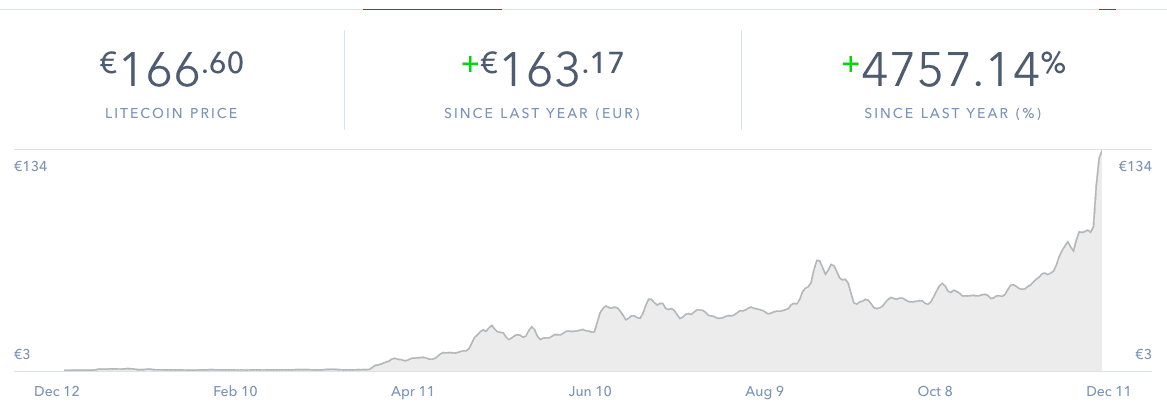Litecoin is currently the fifth largest cryptocurrency available to investors by market capitalization (around $11 billion). According to Coinbase, the digital currency is up with +4,752.77% annual change. Now, in just under 24 hours, Litecoin’s price jumped with almost 25%, reaching a new high of $197, just after CBOE launched bitcoin futures on 10th December, 2017.
As reported by Business Insider, “Litecoin initially saw a hefty loss after Coinbase’s GDAX exchange crashed last week, briefly sagging below the $100 mark before this week’s skyrocket in price.”
Although Litecoin is increasing its value day by day, its popularity has been lagging behind, especially now, during the bitcoin “craze”. Litecoin, or LTC, was released in 2011, and reached market cap of $1 billion in just under two years. What is more, in May 2017, Litecoin became the first of the top-5 (by market cap) cryptocurrencies to adopt Segregated Witness.
In addition, the mining of Litecoin is more complication than Bitcoin’s, because of the two algorithms used for mining LTC.
However, while Litecoin is somehow similar to Bitcoin, its processing time and mining are a bit different. According to media, there are two major differences between Litecoin and Bitcoin:
- The Litecoin Network aims to process a block every 2.5 minutes, rather than Bitcoin’s 10 minutes, which its developers claim allows for faster transaction confirmation
- Litecoin uses scrypt in its proof-of-work algorithm, a sequential memory-hard function requiring asymptotically more memory than an algorithm which is not memory-hard

Source: Coinbase
